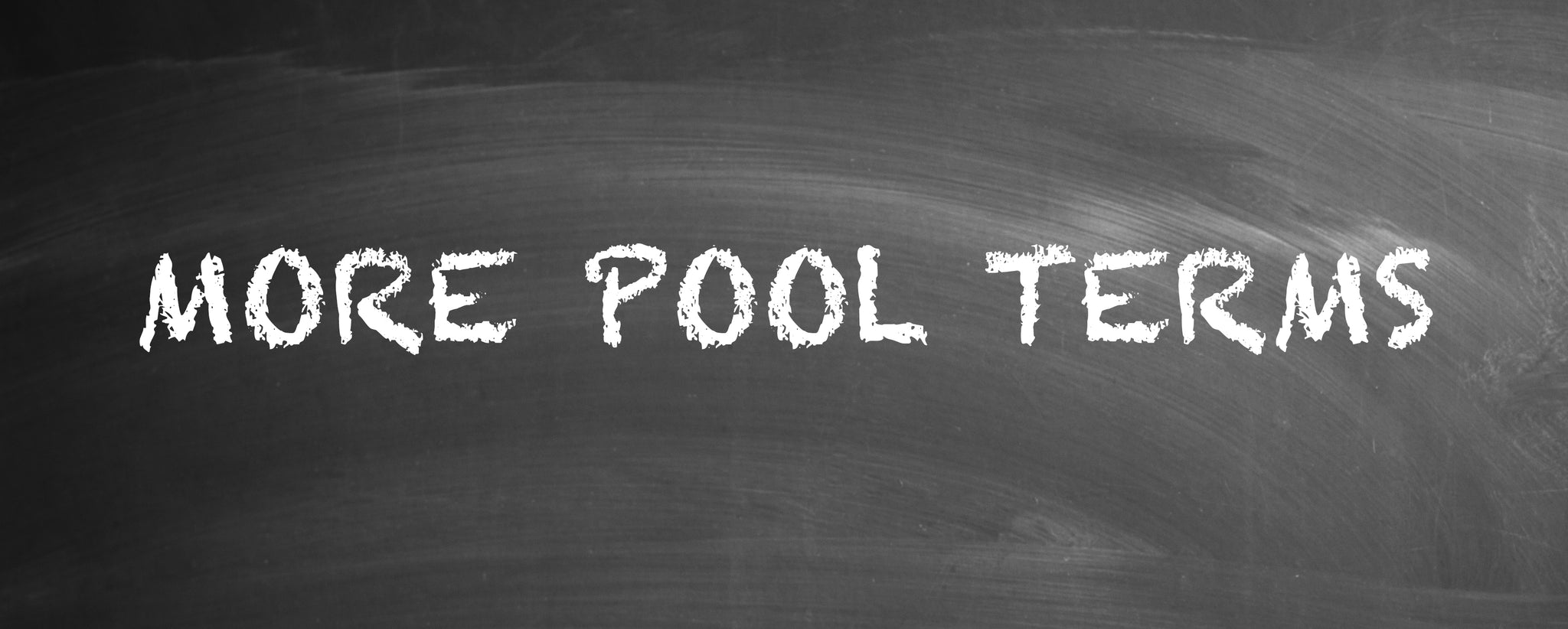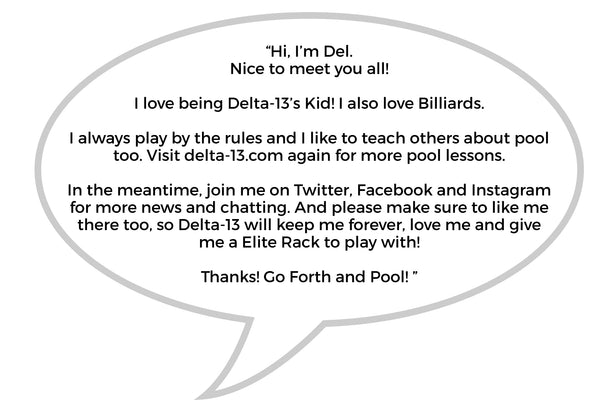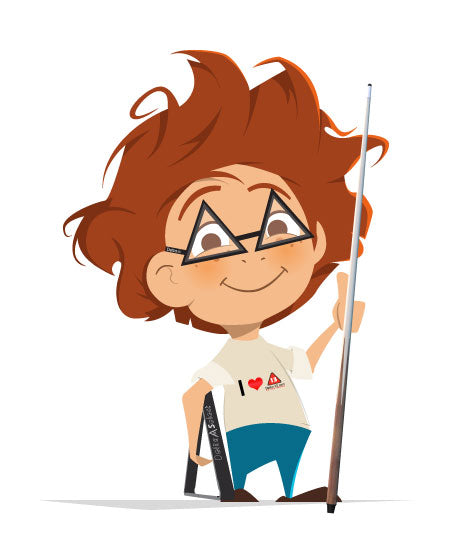Billiard Terminology You May Not Be Familiar With: Pool Shots

Whether you’ve been playing pool for many years or just starting to learn the game, you may find a large amount of the terms used in pool as foreign.
Many of these terms have long histories behind them. Their name’s meanings and definition have developed with the passing of time and perfected by different pool players. Much of this is due to the transformation of billiards in recent years, since the late 19th century until today. Many pool games, their rules and the english terms have changed.
Delta-13 would like to break down some of these trick shots terms for you amazing readers and players!
Maybe you’ve added some new tricks to your repertoire, but never knew the actual name for them? Or you saw someone else perform one during a game and you wondered... Hey what was the name of that pool shot?!
Not anymore! Keep reading...and check out our pool trick shot videos here.
“Behind the Back”

Pocket Games | Advanced
A method of shooting a difficult or unreachable shot with the cue stick held behind your back as you sit on the rail of the table. Usually, this shots requires a gentle stroke and should be done with care. Some bar rules say you cannot sit on the table for this shot, so please know your local bar rules before doing so during play.
History shows this shot is mentioned as a popular shot in 1978, but it seems records of its start date back into the early 18th century. Prints (the one above) were painted of players using this shot during games in different settings. The above photo is most likely a friendly game in a pool hall.

This shot is considered by many as “clumsy and showy.” Some experts avoid this move. Usually another, like shooting with the other hand can work just as effective.
“Machine Gun”

Pocket Billiards | Advanced
A trickshot in which the cue ball is shot to hit quickly off the other balls into the pocket in a fast sequence, creating a fast machine gun-type sound!
History shows this shot is mentioned first played by Yank Adams in 1916, who would perform this shot by rolling the cue ball with his hand. Willie Mosconi was also noted to use this shot, but with a pool cue, in 1965.

When setting up this shot, make sure the balls are “one ball” off the rail. This shot is used by many trick shot artists today.
“Pendulum Cannon”

English Billiards | Advanced
A “cannon” is made with two balls that are 3 inches apart and in line parallel to the cushion just off the rail a small distance. When the cue ball is struck on alternate shots, it creates a pendulum as the balls go back and forth as it contacts them.
This shot was invented by Walter Lovejoy in 1907. The term “Cannon” (aka carom), refers to the rebounding off a ball or rail.

Did you know? The pendulum name also comes from the Pendulum Stroke (or Swing). This stroke is where your elbow does not drop when shooting, creating a pendulum-like motion of your forearm. This stroke was first seen by a pool player named Broadfoot in 1896.
“Postman’s Knock”

English Billiards | Advanced
A kiss stroke where the cue ball is aimed at the object ball, near a cushion, so when the shot is made, the cue ball contacts the object ball twice in rapid succession, sounding like a door knocker (Knock, Knock).
History shows this shot was named and done by a pool player named Mannock in 1908.

This shot is used to keep the object ball near the cushion, making the ball still after its second contact with the cue ball. This allows the other player to maintain position for the next stroke.
“Railroad Shot”

Trickshot | Advanced
A trickshot where the cue ball moves along the groove in between two cue sticks placed next to each other on the table. The solo cue stick, making an acute angle to the other two, makes the “Train Station” and the “Track” is formed by two cue sticks next to each other.
History shows this shot is performed by a pool player named Margo in 1981.

This shot is done by many trickshot artists today. If you are wanting to save your table from damage, place an extra piece of felt under the cue ball for this shot.
“Plant Shot”
British Games| Moderate
A shot where two object balls are touching in a line perpendicular to the cushion. The cue ball is shot, so that one ball goes into the pocket and the other off parallel to the table rail.
This combination shot is also known as a “Kiss Shot” or a “Run Off.”

An imaginary line drawn through the centers of the two touching balls and another from the center of the ball (to be shot into the pocket). These would need to form a 90 degree angle in order to be considered a “Plant Shot”.

Air Gun: A hustler who is out of money, but continues to gamble.
Love Game: Where one player fails to score in a game (aka Shutout).
Nurse: A sequence of shots that disturb the objects balls ever so slightly, resulting in extremely long runs.
Odds: The stronger pool player would give more money to the weaker one if they were to lose.
One-Hole: When you are one point from victory.
Orange Crush: The weaker player is given the 5 orange ball and the break, also known as the crush. This is a handicap with the name derived from the Defense of the Denver Broncos football team.
Pay Ball: A game where every ball that is pocketed, a player receives money.
Penguin: This is a term used to call a tournament player, due to the attire they must wear based on billiard dress code.
Sandbagging: Playing below your handicap in order to secure easier play.
Saver: An agreement between two or more players in a tournament, that state if either win, they will share some of the prize money.
Sell Out: When a player misses a shot and leaves their opponent with a good scoring outcome.
Sharper: Also known as a Hustler. Someone who conceals how well they can play, in order to make money.
Shortstop: A secondary player who can only be beaten by the top players.


- advanced,
- air gun,
- behind the back,
- billiard game,
- billiard terminology,
- british games,
- del,
- del kid,
- delta-13,
- delta-13 kid,
- delta-13 pro tip,
- english billiards,
- game,
- kiss stroke,
- learn,
- love game,
- machine gun,
- meet the delta-13 kid,
- moderate,
- more pool terms,
- nurse,
- odds,
- one-hole,
- orange crush,
- pay ball,
- pendulum cannon,
- penguin,
- plant shot,
- pocket games,
- pool shot terms,
- pool table,
- pool terms,
- postmans knock,
- railroad shot,
- sandbagging,
- saver,
- sellout,
- sharper,
- shortstop,
- teach,
- trick shot,
- try






